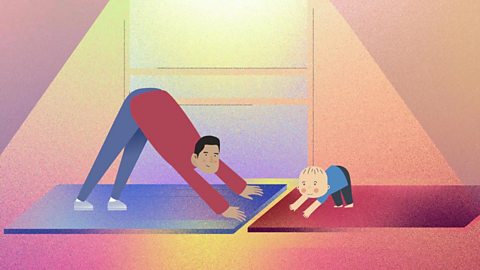Heard your baby can only see in black and white? Surprisingly, they can actually see some colour from the moment theyãre born, although itãs a little while before they can see the full ãrainbowã and be able to use words like ãredã and ãyellowã in a sentence.
ãItãs a common myth that babies can only see black and white at birthã, says Dr Alice Skelton from the University of Sussexãs School of Psychology. ãIf at birth you show a baby a very bright red and white light, theyãll look for longer at the red light than the white. So we know they can tell those two colours apart.ã
Alice is an expert in how and when babies see and learn about colours. She adds, ãFor babies, itãs a bit like the saturation dial has been turned down on the world. Colours need to be very intense for them to see them at first.ã

What colours can babies see and when?
To see the world through your babyãs eyes, Alice suggests imagining youãve put a photo almost entirely into monochrome and youãre able to dial just a little bit of the colour back in. ãThatãs what itãs like for babies.ã
The reason for this is the special cells in our eyes that help us see the world in colour, which are known as cones, arenãt fully developed at birth. ãOnce these colour cells have developed to be more like adults', usually around two months, theyãll see an improvement in the colours they can seeã, adds Alice.
Itãs a quick process. ãHow well they can see colour gets twice as good for every doubling of ageã, she explains. This means when your baby is six months old, theyãll see colour twice as well as when they were three months old. ãThis keeps going until theyãre about 17 or 18 years old. Thatãs the age your colour vision is the best itãs going to be, and then it starts getting worse again.ã
Hereãs a basic colour timeline:
| Approximate age | Ability with colour |
|---|---|
| One week | Can see very intense red or green colours |
| Two months | Can see blue-ish colours and tell red and green colours apart |
| Three months | Can see yellow-ish colours and tell yellow and blue colours apart |
| Six months | Can know what colour an object should be, for example, that a strawberry is red |
| One year | Can see more washed-out colours, not just bright ones |
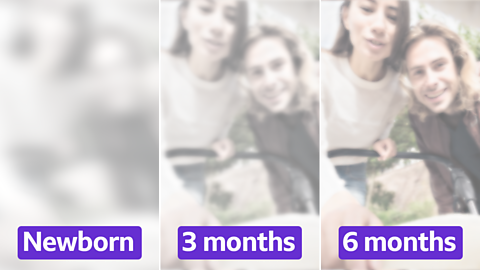
Do babies have a favourite colour?
Not really, but they do like high contrasting colours, says Alice. So look for picture books and toys that are colourful, not just black and white. ãBabies would prefer to look at something colourful than something black and white. Theyãre driven to seek out colour. Itãs a bit of information about the world thatãs useful to them.ã
When can babies see pastel colours?
Not for a while. ãThese colours are probably quite greyish to babiesã, says Alice. This means pastel-coloured toys will all look similar to babies, no matter which colour they are. ãThey need colours to be intense to see them.ã
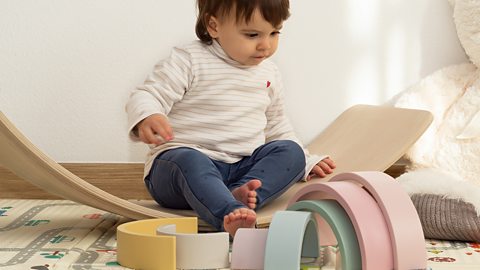
When do children learn colour words?
This usually comes when your child is between 2-3 years old, although it could be a bit earlier or later. Speech and language therapist Claire Smith says, ãLearning colour words is part of language development, but donãt sweat it if your child isnãt picking them up yet. The language building blocks are naming words (nouns) and action words (verbs). When theyãve grasped these, your child will move on to describing words (adjectives).ã Only when theyãre ready can they move onto conceptual words for sizes, shapes and colours.
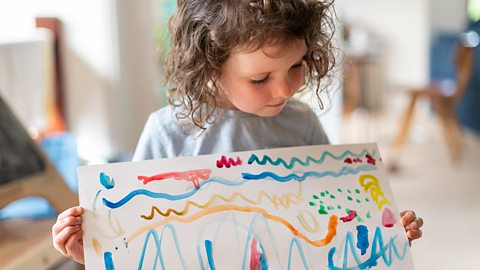
Why is learning colour words hard?
ãOne of the possible reasons children struggle learning colour words is to do with the idea of where the boundary is between different colour groups. Where is the point that blue becomes green, or the point that red becomes pink?ã, says Alice.
Another issue is that there are a lot of different shades of each colour, says Claire. And this can make it hard for children to learn colour words. ãYou might say to your child, ãthe sun is yellowã, ãthat flower is yellowã and ãthese socks are yellowã. But theyãll all be different.ã
What about colour-blindness?
Colour-blindness (also known as colour vision deficiency) is very rare, affecting around 8% of boys and less than 0.5% of girls. Colour-blind children find it hard to tell the difference between colours. For example, your child might not be able to see a red ball on the green grass.
ãThereãs no point worrying when children are still learning colour wordsã, says Alice. ãWe know they find them difficult to learn and they might make mistakes. If they are still consistently mixing up colours when they are 3, especially red and green, talk to your health visitor or optician.ã
How to teach your child colour words
Claire has these top tips:
1. Focus on one colour at a time
Work on understanding one colour first. Say to your child, ãLetãs find lots of blue things today. Youãve found a ball thatãs blue. Look, the slide is blueã, and so on. When youãre confident theyãve understood ãblueã, move on to a contrasting colour like yellow and do the same thing. This helps your child learn that colours are labels that describe things.
2. Think how youãre using colour words
A common mistake parents make is to point to something ã a teddy for example ã and say, ãredã or ãlook, itãs redã. Itãs not just red, itãs a teddy thatãs red. The colour name is secondary to what the thing actually is. So try saying, ãThe teddy is redã instead.
3. Use colours every day
Make colour words part of your everyday language and give your child choices. ãDo you want red socks or blue socks?ã. The best way to help children to learn language is to use what children are interested in at that time.
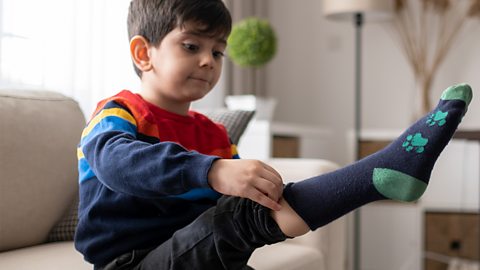
4. Donãt just focus on colours
Itãs best to focus on what the thing is rather than its colour. If a car goes past, you can say, ãa red carã, but use lots of other describing words too, for example, ãItãs a fast carã or ãItãs a noisy carã. This helps develop your childãs vocabulary in a massive way. From a language point of view, colours are often less important than other describing words. So donãt get too bogged down if they donãt learn them quickly.

